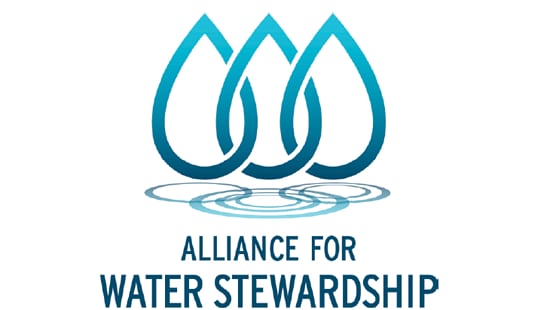
Ecolab’s Garland, Texas, Plant
Alliance for Water Stewardship (AWS) Case Study
Published October 2025
Insights
As a global leader in water solutions and services, Ecolab remains dedicated to creating a more water secure future through smart water management, conservation and stewardship. By 2030 we plan to continue to achieve a Net Positive Water Impact through:
- Reducing, recycling and replenishing water at operational sites. We aim to reduce water impact by 40% per unit production across our enterprise from a 2018 base year.
- Protecting local watersheds by working to restore greater than 50% of our absolute water withdrawal volume at high-risk sites.
- Delivering outcomes through the Alliance for Water Stewardship (AWS) Standard by achieving AWS certification for Ecolab manufacturing sites located in high-risk watersheds.
- Ecolab’s manufacturing facility located in Garland, Texas, is a key contributor to these goals. The Garland facility is a blend plant that primarily produces institutional, food and beverage, textile and life science products.
Ecolab’s Garland manufacturing facility uses water from the city of Garland, which sources water from these locations: Lavon Lake, Lake Chapman (Cooper Lake), Lake Tawakoni, and Lake Texoma. Water from these lakes is treated by the North Texas Municipal Water District (NTMWD), before it is sent to the city and then to Ecolab’s Garland facility. The facility's effluent water is sent to and treated at the Duck Creek Wastewater Treatment Plant.
The Garland facility was identified as a priority location to pursue AWS certification, enhance the site’s smart water management approach and implement innovative technologies to advance enterprise water goals.
Actions
To contribute to Ecolab’s enterprise water goals, the local team’s objective is to reduce annual water use per ton of product by 40% from 2018 to 2030.
The following projects help improve the facility’s water balance and have been implemented to reduce overall water use:
- Monitoring and control of water use in chemical mixing processes
- Conducting plant assessments for water reduction opportunities such as wash cycle reduction
Outcomes
As a result of these actions, the Garland facility achieved substantial water savings. The improvements made at the site have proved to be a helpful step forward for enhancing the site’s operations and advancing Ecolab’s sustainability goals.
Featured Solutions
Leveraging Ecolab solutions and digital technologies help the Garland facility reduce, reuse and recycle water.

To improve the overall health of local watersheds, and as part of Ecolab’s efforts to create 2030 Positive Impact, we have prioritized AWS certification in high-risk watersheds in which we operate.
Water Stewardship Journey
Ecolab is committed to sustainable water use in our facilities and collaboration with other businesses at the local level. In alignment with Ecolab’s commitment to a holistic approach to water management across its manufacturing facilities, the company is pursuing the Core Certification for Alliance for Water Stewardship (AWS) Version 2.0 International Water Standard at its Garland facility. The facility has continued to stay up to date on AWS requirements as it pursues the core certification.
To identify shared water challenges in the Trinity River’s East Fork Basin, a comprehensive risk assessment was performed leveraging insights from Ecolab’s Smart Water Navigator, and the World Resources Institute (WRI) Aqueduct Atlas. Implementation of water withdrawal reduction projects were prioritized based on risk probability and impact to site-level and community stakeholders.
Ecolab’s water stewardship approach aims to make a positive impact within our operations and on the water challenges within the communities we operate in. For the Garland facility and local stakeholders, the top water-related challenges include natural disasters like hurricanes and freezes, flooding, and water pollution. Additional concerns include land subsidence from resource extraction, aging water infrastructure, loss of wetlands and species, and increasing water scarcity.
To effectively address these challenges, a strong water stewardship approach strives for continuous improvement in sustainable site water balance and water quality. Our holistic approach includes a focus on important water related areas (IWRA) and Water Sanitation and Hygiene (WASH), and our continued progress in these critical areas depends on our strong water governance.

Sustainable Water Balance
Net Positive Water
A sustainable water balance and smart water management approach within our own operations is a critical component in achieving enterprise-wide net positive water impact. Aligned with the enterprise goals, the local team’s objective is to reduce the site’s annual water use per ton of product by 40% from 2018 to 2030. The team at Ecolab’s Garland site assessed the facility for opportunities to decrease water use across operations to meet Ecolab’s targets to create 2030 Positive Impact. Implementation of water reduction projects are prioritized based on risk probability and impact to site-level and community stakeholders.

Water Quality
Water Quality Approach
To maintain good water quality, wastewater testing is carried out internally based on permit requirements. Wastewater is treated prior to discharge in accordance with regulatory requirements, and periodic monitoring is performed to ensure compliance with environmental standards. Stormwater is managed separately, with visual inspections and sampling conducted at designated intervals to meet permit conditions.
Prior to draining stormwater and discharging wastewater, the facility must visually inspect and test the effluent to confirm that it meets the local environmental requirements, permit limits or company standards. If there are no local environmental requirements or permit limits, company standards must be met for stormwater discharge into an adjacent waterway or wastewater effluent into a city sewer system. If a spill or water-related issue were to occur the site has a robust incident response plan that includes a root cause analysis of the original incident, documentation in an internal reporting platform and communication of mitigation strategies. Site water-related compliance information is available upon request.

Water Governance
Water Governance Approach
At the plant level, the Safety, Health and Environmental (SHE) department is responsible for wastewater compliance. The SHE Manager serves as the primary lead for ensuring operational alignment with environmental laws, regulations, and internal policies, while the plant manager holds overall accountability for site-level compliance.
In the event of an accidental discharge, the plant manager is responsible for overseeing prevention efforts, supported by the SHE Manager and production manager. To meet wastewater and stormwater compliance requirements, the SHE specialist conducts sampling for self-monitoring, benchmark testing, and performs quarterly visual inspections.
The corporate environmental lead is available to consult on regulatory updates and wastewater compliance. Site water-related compliance information is available upon request, including necessary corrective action taken by the site to prevent future occurrences.
The corporate sustainability team is guided and advised by the Sustainability Executive Advisory Team (SEAT), which is made up of the company’s most senior business and divisional leaders. In addition, Ecolab’s Sustainability, Water Stewardship and Safety, Health and Environment (SHE) positions are publicly available and serve as commitments to and guidance on water-related issues and compliance. Ecolab’s Sustainability Position formalizes Ecolab’s global commitment to sustainability within the company and its impact on customers. Ecolab’s Water Stewardship Position reinforces Ecolab’s global commitment to responsible water stewardship by identifying opportunities for the company and its customers to use water resources in a manner that benefits business, communities and nature. Ecolab’s SHE Position outlines the company’s commitment to excellence in safety, health and environmental practices and performance across global operations.

Important Water Related Areas (IWRA)

Water, Sanitation and Hygiene (WASH)
Collective Action
In addition to internal operational improvements, Ecolab’s Garland facility’s external water stewardship activities are ongoing. To address these shared issues, the Garland facility has started developing community partnerships through stakeholder outreach, seeking collaboration with other water users in the basin.
Ecolab associates at the facility continue to be engaged in collective action within their community. In 2025, employees in the Garland facility participated in two cleanup events at Duck Creak Greenbelt Park in January and May 2025 for a total of 65 associates completing 259 hours cleaning up litter to keep it from falling into nearby waterways.
On top of local water stewardship efforts, Ecolab’s global giving program, Solutions for Life, enhances the company’s mission to conserve and protect fresh water through partnership and additional projects with The Nature Conservancy (TNC) and the Project WET Foundation.
This case study was created to comply with AWS indicators 5.1.1, 5.2.1, 5.3.1. 5.4.1, 5.4.2, 5.5.1, 5.5.2 and 5.5.3. Additional details regarding the Garland site AWS work is available upon request. For more information, please contact sustainability@ecolab.com.







